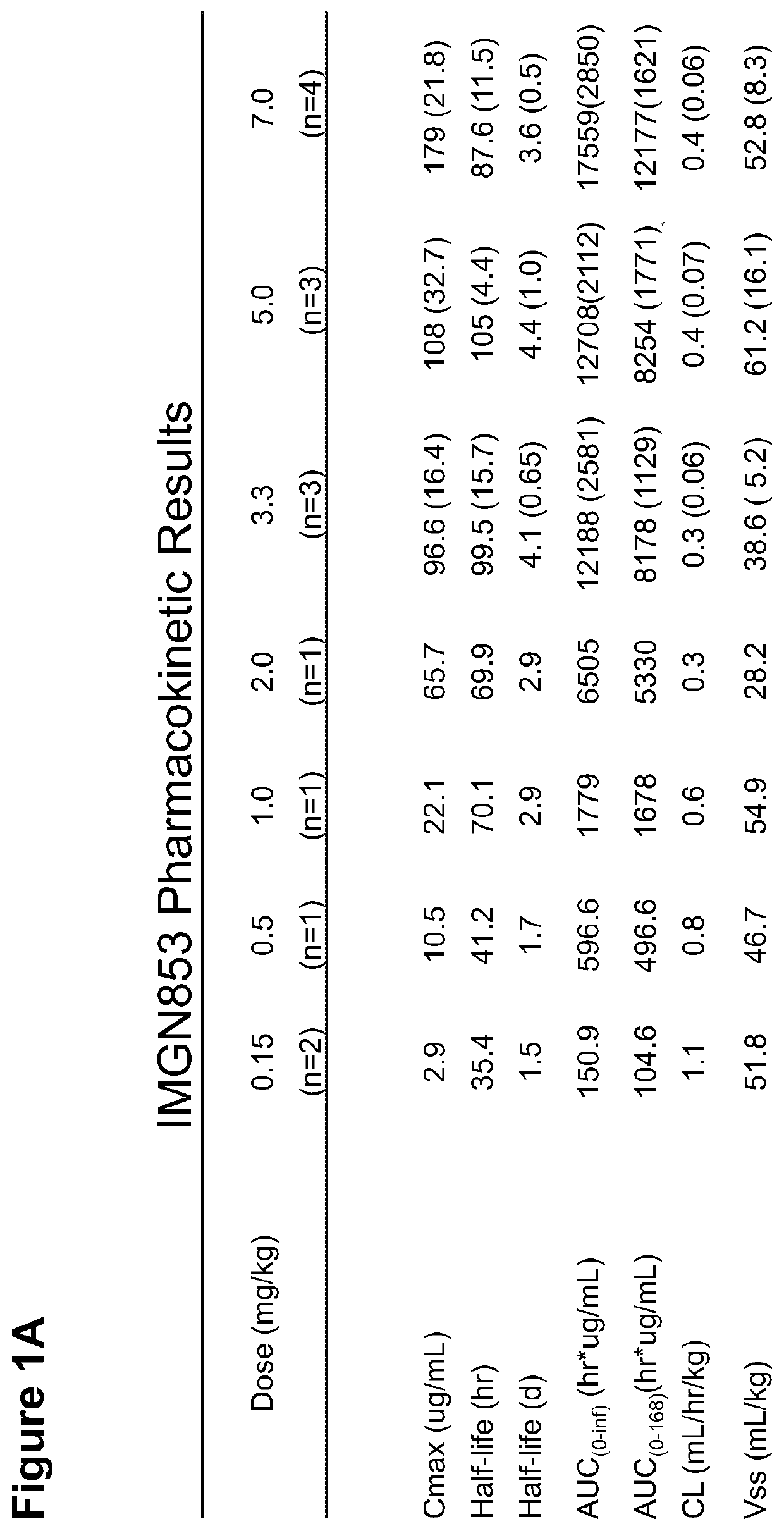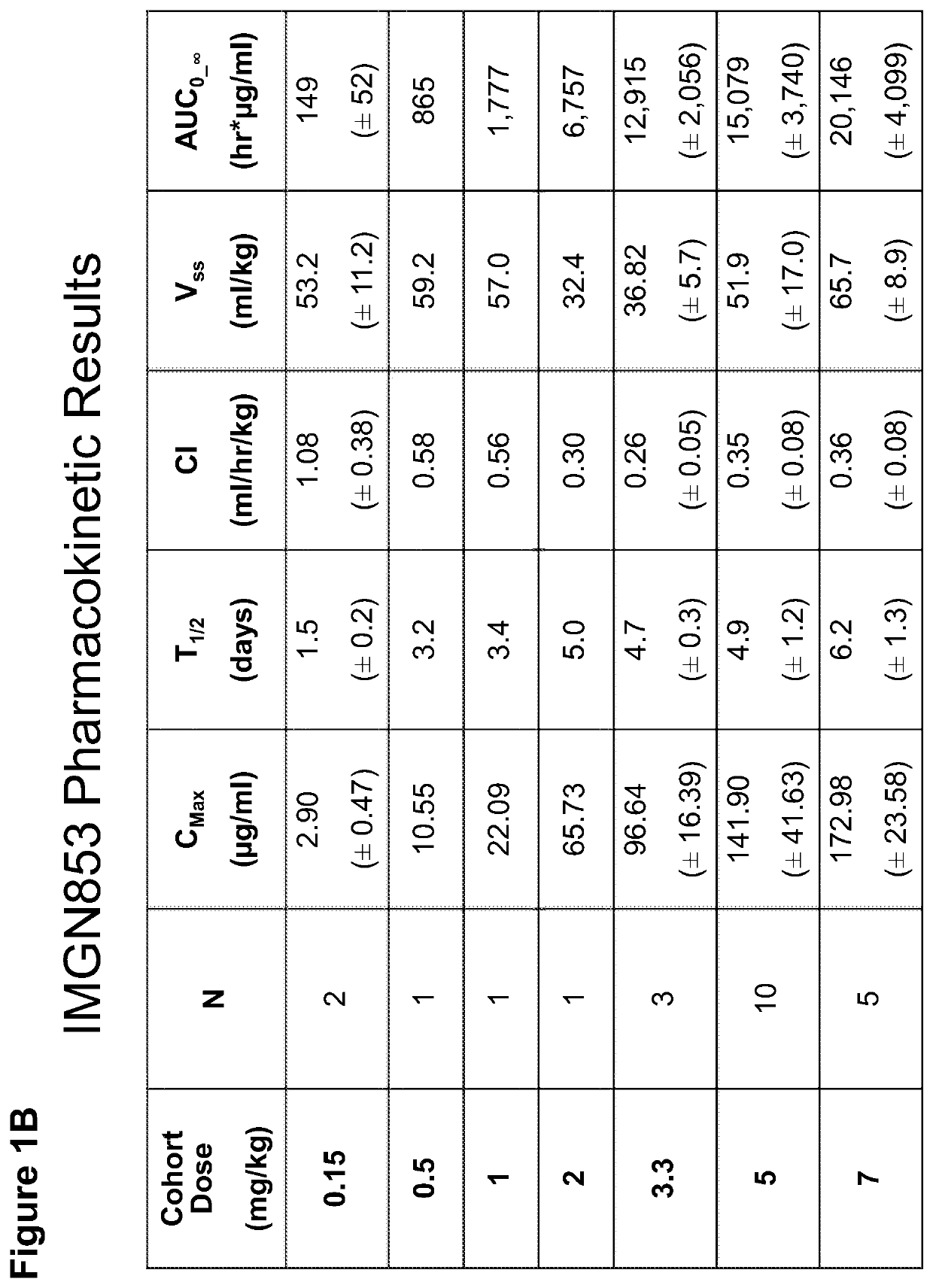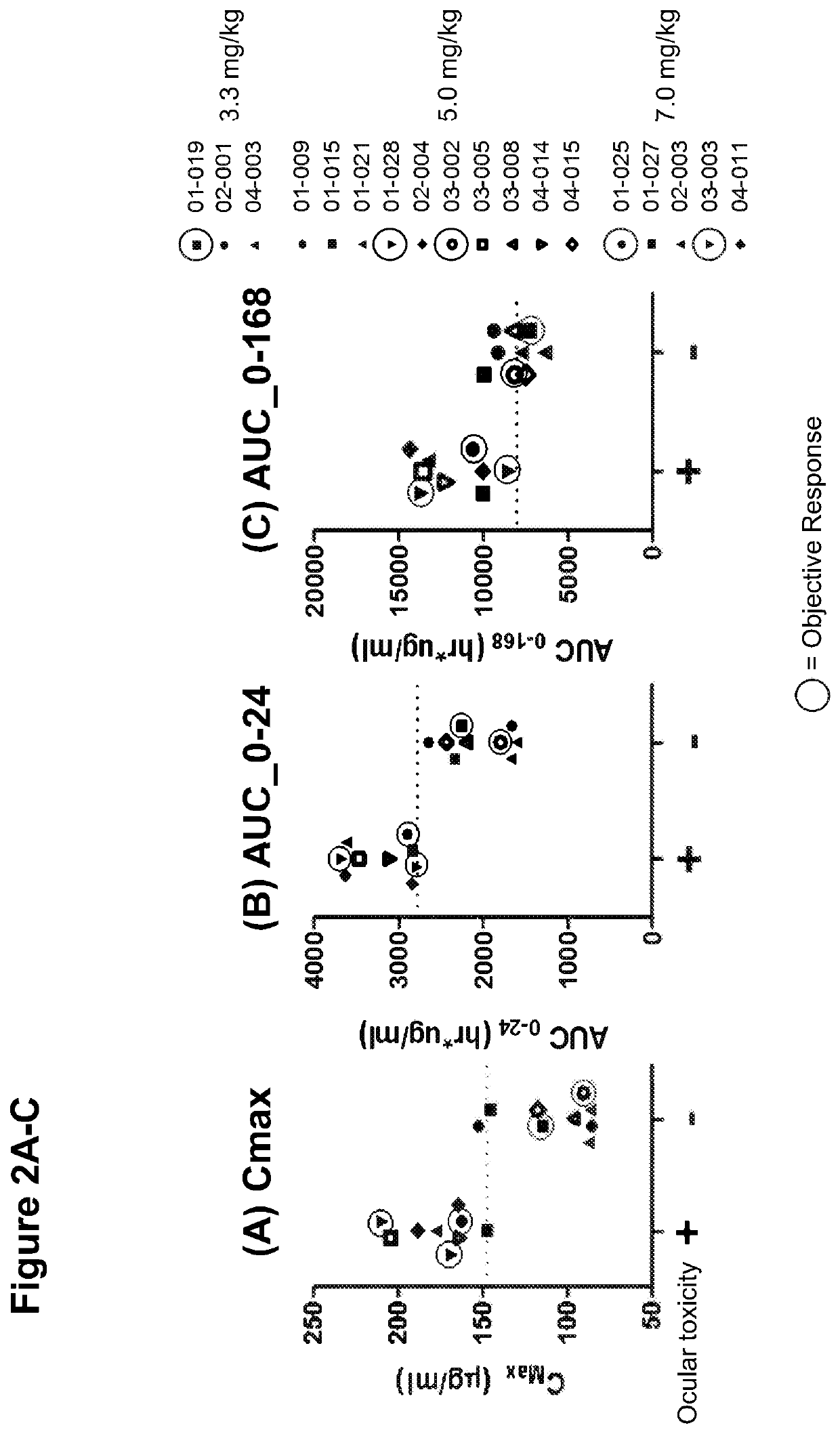Anti-folr1 immunoconjugate dosing regimens
a technology of immunoconjugate and immunoconjugate, which is applied in the direction of antibody medical ingredients, drug compositions, peptides, etc., can solve the problems of toxicity reduction, achieve high initial auc value, reduce unwanted side effects, and reduce the effect of side effects
- Summary
- Abstract
- Description
- Claims
- Application Information
AI Technical Summary
Benefits of technology
Problems solved by technology
Method used
Image
Examples
example 1
[0181]IMGN853 Dosing Trial in Human Cancer Patients
[0182]IMGN853 is an antibody-drug conjugate (ADC) comprising a folate receptor 1 (FOLR1)-binding antibody and the potent maytansinoid, DM4. IMGN853 has been previously described in International Published Application Nos. WO 2011 / 106528, WO 2012 / 135675, and WO 2012 / 138749, and U.S. Published Application Nos. 2012 / 0009181, 2012 / 0282175, and 2012 / 0282282, each of which is incorporated by reference herein in its entirety. IMGN853 is huMov19-sSPDB-DM4, and the huMov19 antibody contains a variable heavy chain with the amino acid sequence of SEQ ID NO:3 and a variable light chain with the amino acid sequence of SEQ ID NO: 5. FOLR1 protein is expressed at elevated levels on many solid tumors, particularly epithelial ovarian cancer (EOC), endometrial cancer, non-small cell lung cancer (NSCLC), and clear-cell renal cell cancer.
[0183]A study to determine the maximum tolerated dose (MTD) and recommended phase 2 dose (RP2D) as well as to evalua...
example 2
IMGN853 Steroid-Based Prophylaxis for Infusion Reaction
[0191]In order to decrease the likelihood of infusion reaction, any of the following steroid-based prophylaxis protocols can be used.
[0192](1) Patients receive dexamethasone, 10 mg IV (or similar steroid equivalent), 30 to 60 minutes prior to anti-FOLR1 immunoconjugate (e.g., IMGN853) administration.
[0193](2) Patients receive dexamethasone, 10 mg IV (or similar steroid equivalent) and diphenhydramine HCl (25-50 mg IV or PO), with or without acetaminophen (325-650 mg IV or PO), 30 to 60 minutes prior to anti-FOLR1 immunoconjugate (e.g., IMGN853) administration. This prophylactic protocol is recommended and at the discretion of each investigator.
[0194](3) Patients receive dexamethasone 8 mg (or similar steroid equivalent) by mouth BID on the day prior to administration of anti-FOLR1 immunoconjugate (e.g., IMGN853). On the day of administration of anti-FOLR1 immunoconjugate (e.g., IMGN853), 30-60 mins prior to anti-FOLR1 immunoconj...
example 3
Relationship of IMGN853 Exposure with Ocular Toxicity
[0196]For each patient treated with the IMGN853 protocol described in Examples 1 and 2, the plasma concentration of IMGN853 was measured at various time points across each cycle, beginning at end of infusion and continuing to day 21. Pharmacokinetic (PK) parameter analysis identified an apparent association between Cmax and the occurrence of ocular toxicity, which is characterized by corneal deposits and loss of visual acuity. The statistically significant correlation was also observed with early exposure levels as measured by area under the curve in the first 24 hrs (AUC0-24). (See FIGS. 2A-2C.)
[0197]In the 3.3 to 7.0 mg / kg cohorts, ocular toxicity was observed in 9 / 10 patients with Cmax values at or above 147.7 μg / ml, indicated by the dotted line in FIG. 2A. No patients with Cmax values below 147.7 μg / ml developed ocular toxicity. All (9 / 9) patients with an AUC0-24 at or above 2785 hr*μg / ml, indicated by the dotted line in FIG. ...
PUM
| Property | Measurement | Unit |
|---|---|---|
| body weight | aaaaa | aaaaa |
| dissociation constant | aaaaa | aaaaa |
| dissociation constant | aaaaa | aaaaa |
Abstract
Description
Claims
Application Information
 Login to View More
Login to View More - R&D
- Intellectual Property
- Life Sciences
- Materials
- Tech Scout
- Unparalleled Data Quality
- Higher Quality Content
- 60% Fewer Hallucinations
Browse by: Latest US Patents, China's latest patents, Technical Efficacy Thesaurus, Application Domain, Technology Topic, Popular Technical Reports.
© 2025 PatSnap. All rights reserved.Legal|Privacy policy|Modern Slavery Act Transparency Statement|Sitemap|About US| Contact US: help@patsnap.com



